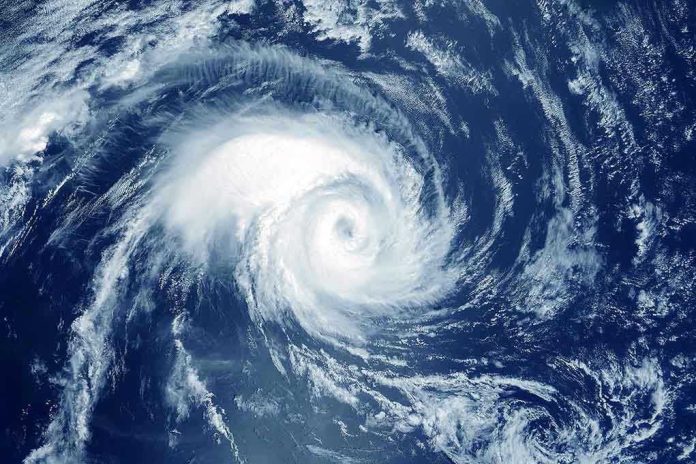
The Philippines just endured what may be the cruelest natural disaster double-punch in modern history, as Super Typhoon Fung-wong slammed into a nation still burying the dead from another catastrophic storm that killed over 200 people just days earlier.
Story Snapshot
- Super Typhoon Fung-wong struck northern Philippines on November 9, 2025, with winds exceeding 240 km/h
- The disaster occurred just days after Typhoon Kalmaegi killed at least 224 people in central regions
- Over 1.1 million people were evacuated as the nation faced back-to-back catastrophic storms
- The Philippines has been declared the world’s most disaster-prone country for three consecutive years
- Four major storms have battered the archipelago in under two months
When Disasters Collide: A Nation’s Nightmare Scenario
Imagine trying to rescue survivors from one typhoon while another monster storm bears down on your country. That became the harsh reality for Philippine emergency responders on November 9, 2025. Rescue operations for Kalmaegi victims had to be suspended as Fung-wong approached with sustained winds that meteorologists called “unprecedented for the region.” The timing couldn’t have been more devastating for a nation already stretched to its breaking point.
The government declared a red alert across 17,000 barangays, essentially placing one-third of the country under emergency status. Emergency shelters, already overcrowded with Kalmaegi survivors, suddenly had to accommodate another wave of evacuees. The strain on resources became immediately apparent as relief supplies meant for one disaster had to be redistributed for two simultaneous crises.
The Geography of Vulnerability
The Philippines sits in what meteorologists call the “typhoon highway” of the Western Pacific, where storms gather strength from warm ocean waters before making devastating landfall. But Fung-wong represented something different. The storm underwent rapid intensification that caught even seasoned forecasters off guard, growing from a tropical depression to a super typhoon in just five days between November 3 and November 8.
Aurora province in northern Luzon bore the brunt of Fung-wong’s fury, experiencing what residents described as “apocalyptic” conditions. The Philippine Institute of Volcanology and Seismology issued warnings about potential lahar flows from Mayon Volcano, adding volcanic mudslides to an already catastrophic situation. When nature’s forces combine like this, even the most prepared communities struggle to survive.
A System Under Siege
The National Disaster Risk Reduction and Management Council faced an unprecedented challenge: coordinating disaster response for two major typhoons simultaneously. Over 30 million Filipinos found themselves in the potential path of destruction, with transportation networks paralyzed and communication systems failing in multiple regions. The Philippine Coast Guard suspended all sea travel, stranding thousands of passengers who had been attempting to flee the storm’s path.
What makes this crisis particularly heartbreaking is the pattern it reveals. Climate scientists point to increasingly frequent “super rapid intensification” events, where storms gain catastrophic strength in mere hours. The Philippines, despite contributing less than one percent of global greenhouse gas emissions, finds itself on the front lines of climate change’s most violent manifestations. This isn’t just bad luck; it’s becoming the new normal for a nation that can least afford it.
The Human Cost of Nature’s Fury
Behind every evacuation number lies a human story. Families who lost everything to Kalmaegi found themselves fleeing again, carrying whatever possessions they could salvage. Evacuation centers designed for temporary stays became long-term shelters, raising concerns about disease outbreaks and psychological trauma among displaced populations. Children who had already missed weeks of school due to the previous typhoon faced indefinite educational disruption.
The economic toll extends far beyond immediate storm damage. Agricultural regions that feed much of Southeast Asia saw crops destroyed twice in one week. Infrastructure repairs from Kalmaegi were abandoned as crews scrambled to prepare for Fung-wong. The compounding effect of successive disasters creates a recovery deficit that could take years to overcome, assuming no additional major storms strike during the rebuilding period.
Sources:
Wikipedia: Typhoon Fung-wong (2025)









